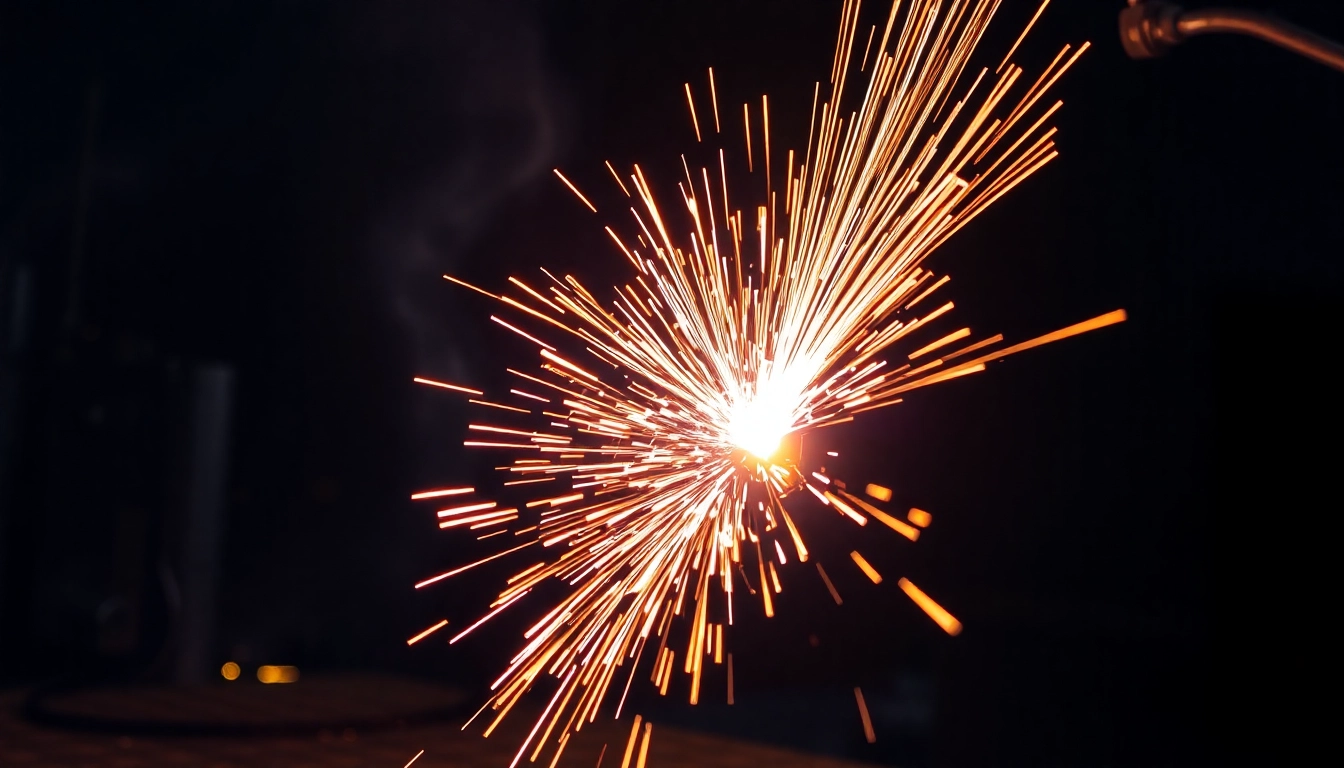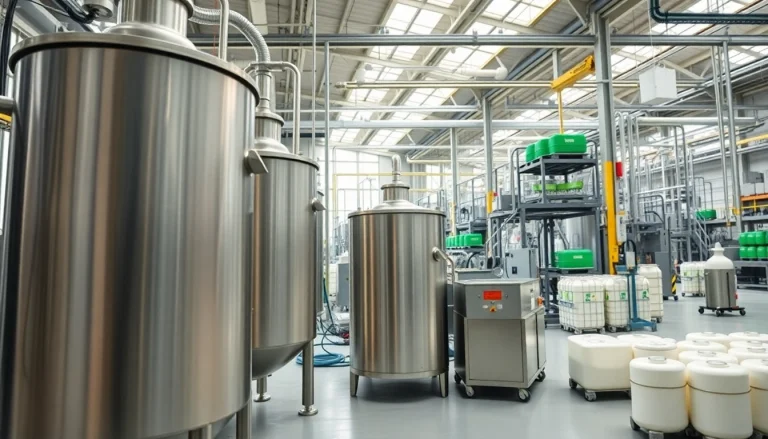Understanding the Basics of AC DC TIG Welders
What is an AC DC TIG Welder?
An AC DC TIG welder combines the functionality of both AC (Alternating Current) and DC (Direct Current) welding in a single machine. This versatility allows welders to work with a broader range of materials, such as aluminum, stainless steel, and mild steel. The primary process used in TIG welding (Tungsten Inert Gas welding) involves a non-consumable tungsten electrode that produces the weld. The use of inert gas, typically argon or helium, protects the weld pool from atmospheric contamination. This method yields clean, precise welds, making it ideal for applications requiring high-quality aesthetics and strength.
Benefits of Using AC DC TIG Welders
There are numerous benefits to utilizing an ac dc tig welder in your projects:
- Versatility: The ability to weld with both AC and DC current substantially increases your ability to work with various metals and thicknesses.
- High Precision: TIG welding offers superior control over the weld pool, allowing for clean and precise welds, making it perfect for intricate work in industries like aerospace and automotive.
- Less Cleanup: The process generates less spatter compared to MIG (Metal Inert Gas) welding, which often results in lower post-weld cleanup time.
- Lower Heat Input: This reduces the chances of warping thin materials, providing a significant advantage when working on delicate items.
Common Applications and Use Cases
AC DC TIG welders are widely used across various industries. Common applications include:
- Automotive Repair: Ideal for welding thin sheet metals found in a car’s body.
- Aerospace: Used for high-strength joints where precision is paramount.
- Fabrication Shops: Excellent for creating custom metal pieces due to its adaptability with different metals.
- Artistic Welding: Artists utilize TIG welding for intricate designs and sculptures.
Choosing the Right AC DC TIG Welder for Your Needs
Factors to Consider When Buying
When selecting the perfect AC DC TIG welder for your needs, consider the following:
- Welding Thickness: Assess the thickness of materials you will primarily be working with. For example, if you aim to weld aluminum, ensure your chosen welder handles this metal efficiently with high-frequency capabilities.
- Power Requirements: Choose a welder that matches your power supply—portable options may run on 110V, while more capable models might require 220V.
- Duty Cycle: This indicates how long the machine can operate before needing a cooldown. A higher duty cycle is essential for prolonged welding sessions.
- Portability: If you plan on moving your equipment between job sites, consider the weight and size.
- Ease of Use: Look for features like multi-function displays or user-friendly control panels for easier operation.
Top Models on the Market
Here are some of the top-rated AC DC TIG welders available:
- Everlast PowerTIG 255EXT: Known for its versatility and extensive features, including advanced control systems and a high-duty cycle.
- PrimeWeld TIG225X: A budget-friendly option with powerful performance, suitable for beginners and professionals alike.
- Miller Diversion 180: This welder is user-friendly and portable, making it ideal for hobbyists and light fabrication work.
- Lincoln Electric Square Wave TIG 200: Recognized for its inverter technology, it’s excellent for varied welding practices, including aluminum.
Price vs. Performance Analysis
It’s crucial to evaluate the price versus the performance capabilities of AC DC TIG welders:
- Entry-Level Models: Options available for under $1,000 often boast essential features to get started but may lack advanced settings found in higher-end units.
- Mid-Range Welders: Priced between $1,000 and $2,500, these welders offer a balance between versatility and advanced features suitable for both home use and larger projects.
- Professional Grade: Above $2,500, you can expect robust machines that can handle industrial-grade projects, increased amperage, and high-duty cycles for extensive use.
AC DC TIG Welder Setup and Operation
Essential Equipment and Accessories
Setting up an AC DC TIG welder requires several essential components:
- Gas Supply: Ensure you have a suitable source of argon gas; this is vital for shielding the weld pool.
- Tungsten Electrodes: Choose the right size and type of tungsten electrode based on the metal you are working with.
- Filler Rods: Select appropriate filler materials based on the base metals to be welded.
- Welding Helmet: Invest in an auto-darkening helmet to protect your eyes and face from harmful UV/IR rays.
- Foot Pedal or Torch Controls: These accessories help manage the welding arc and heat input during the welding process.
Step-by-Step Setup Guide
Setting up your AC DC TIG welder involves the following steps:
- Ensure your workspace is clean and adequately ventilated.
- Set up your gas cylinder and connect it to the welder, ensuring all fittings are secure.
- Choose the appropriate tungsten electrode and insert it into the torch.
- Configure your machine settings based on the metal type and thickness, including amps, AC/DC options, and pulse frequency.
- Prepare the workpiece by cleaning it thoroughly to eliminate any contaminants.
- Wear proper safety gear, including gloves, helmet, and long sleeves.
Safety Tips for Using TIG Welders
Safety is paramount when using an AC DC TIG welder. Follow these guidelines:
- Protective Gear: Always use protective clothing and shielding to protect yourself from UV rays and sparks.
- Fire Safety: Keep a fire extinguisher accessible and work in a space free from flammable materials.
- Ventilation: Ensure there is enough airflow to avoid fume inhalation, particularly when welding materials that could emit harmful smoke.
- Electrical Safety: Be cautious when working with electrical connections and ensure your equipment is properly grounded.
Techniques for Mastering AC DC TIG Welding
Difference Between AC and DC Settings
An understanding of AC and DC settings is crucial for effective TIG welding:
- AC Current: Primarily used for welding aluminum, AC allows for the cleaning of the oxide layer on aluminum, leading to a cleaner weld.
- DC Current: More commonly used for steel and stainless steel; it offers a steady, smooth arc and is generally easier to control.
Tips for Welding Aluminum and Steel
Here are some tips specific to welding aluminum and steel using an AC DC TIG welder:
- Aluminum Welding: Use a higher frequency setting to achieve a clean arc and be sure to clean the aluminum surface with a suitable solvent.
- Steel Welding: Preheat thicker materials to help the weld pool form, and consider using a larger diameter tungsten for better heat management.
Common Mistakes and How to Avoid Them
Many beginners encounter challenges when using an AC DC TIG welder. Here’s how to avoid common pitfalls:
- Incorrect Settings: Always match your machine settings to the material type and thickness.
- Inadequate Cleaning: Ensure proper cleaning of the workpieces to reduce weld contamination.
- Poor Arc Control: Practice maintaining a steady distance and angle for optimal control over the weld pool.
Maintenance and Troubleshooting Tips for AC DC TIG Welders
Routine Maintenance Checklist
To keep your AC DC TIG welder functioning optimally, follow this maintenance checklist:
- Clean the torch and inspect the tungsten electrode for wear after each use.
- Regularly check all connections and cables for damage.
- Clean the cooling system and ensure it is free from debris.
- Inspect the gas supply and replace tanks as needed.
Identifying and Fixing Common Issues
Here are some common issues encountered with AC DC TIG welders and potential solutions:
- Inconsistent Arc: Check the gas flow rate and ensure proper gas coverage; also inspect the electrode condition.
- Poor Penetration: Increase heat settings and adjust travel speed to maintain consistent passes.
- Overheating: Ensure your machine’s duty cycle is appropriate for your welding session length.
When to Seek Professional Help
If you encounter persistent issues that you cannot resolve, or if your machine experiences severe mechanical failure, consulting a professional technician is advisable. Regular professional servicing can be valuable in maintaining the durability and reliability of your welder.








